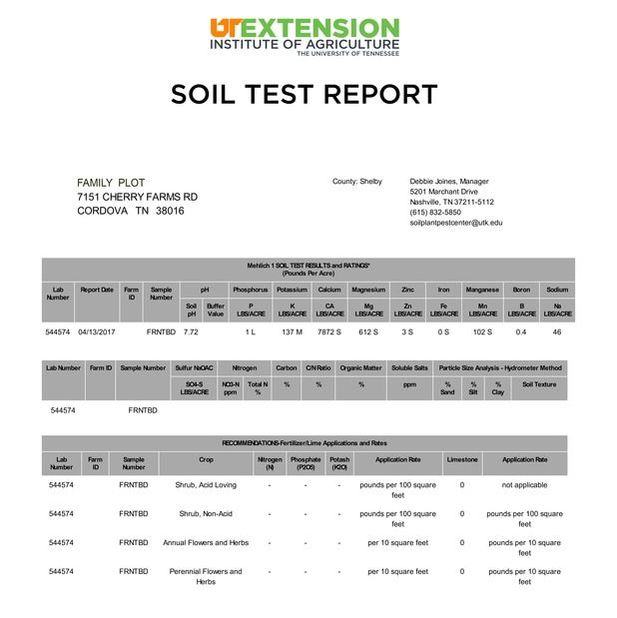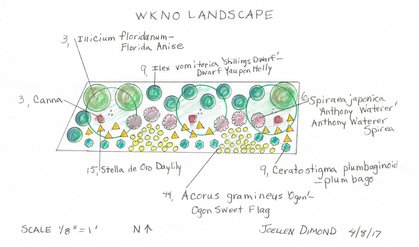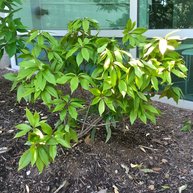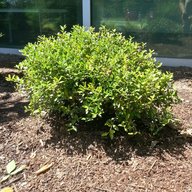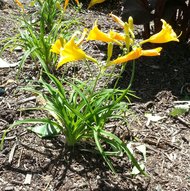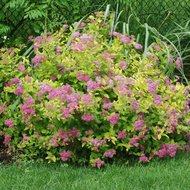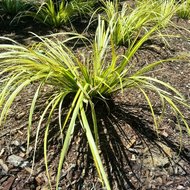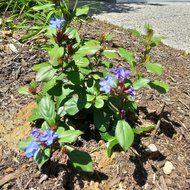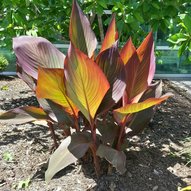Planting Shrubs in Wet Heavy Soils
|
UT Extension Agent Joellen Dimond and Chris Cooper plant a bed in front of WKNO’s studios. Joellen finds the bed has several problems. The soil test (pictured right) comes back okay, but the soil is heavy and wet, so wet that a percolation test could not be conducted because the water just did not drain from a freshly dug hole. The bed also has a very thick mulch layer, 6+ inches in some places. Because of the hard soil and deep mulch, the existing magnolia trees have many if not most of their roots in the mulch layer.
Joellen considered tilling the bed to incorporate the thick mulch as an amendment to the native soil but this would have two undesirable effects. First, the trees would have many of their roots cut by the tiller and may die. Second, having amended soil on top of the non-percolating natural soil would create a basin where water would collect drowning the plants. Using this information, Joellen designed an attractive layout using plants that can tolerate living in a wet area (her design on right). She chose to use Florida Anise, Dwarf Yaupon Holly, Anthony Waterer Spirea, Stella de Oro Daylily, Plumbago, Ogon Sweet Flag, and Canna. She also chose these plants because they should be easy to find in the nursery. Because of the poor percolation Joellen chose to plant the plants with only two thirds of the existing roots under the soil. She chose to leave the rest of the root ball above the soil level and build a mound around each plant with a combination of native soil and a topsoil amendment. This would allow some of the plant’s roots to be above the water so they can breathe. The cannas were already growing in one spot of the bed so she divided the cannas and distributed them into the areas she had planned. When Joellen, Chris and a group of master gardeners were finished, where there was once a bland, bare mulched bed there is now a beautiful arrangement of shrubs and plants. |
Plants Used
|
Florida Anise
Illicium floridanum Florida Anise is an evergreen shrub with maroon blooms in the spring. Florida Anise can grow to 10-15 feet tall and 6-10 feet wide. It does well in shade or part shade. Read this profile from the Missouri Botanical Garden to learn more about the Florida Anise. Dwarf Yaupon Holly Ilex vomitoria 'Schillings Dwarf' The Dwarf Yaupon Holly is an easy to grow, low maintenance, evergreen shrub. It is often used as a foundation planting. It grows very slowly and could get up to five feet tall over many years. Read this article from the University of Arkansas Extension to learn more about the Dwarf Yaupon Holly. Stella de Oro Daylily Hemerocallis x 'Stella de Oro' The Stella de Oro Daylily blooms in the spring and fall with clusters of yellow flowers. It will stay green in the winter in warmer climates. Read this profile from the Missouri Botanical Garden to learn more about the Stella de Oro Daylily. Anthony Waterer Spirea Spiraea x bumulda 'Anthony Waterer' The Anthony Waterer Spirea is a deciduous shrub that blooms with red flowers from spring to mid-summer. It is a compact spirea and will grow to about three feet tall and 3-4 feet wide. Read this profile from the Missouri Botanical Garden to learn more about the Anthony Waterer Spirea. Ogon Sweet Flag Acorus gramineus 'Ogon' Ogon Sweet Flag is a member of the sedge family. It is available with solid and variegated leaves. It requires constant moisture and can even tolerate standing water. Read this profile from the Missouri Botanical Garden to learn more about the Ogon Sweet Flag. Plumbago Ceratostigma plumbaginoides Plumbago or Leadwort has bluish-purple flowers. The plant is often used as a ground cover and will only grow to a height of less than a foot while growing out up to 18 inches. Read this profile from the Missouri Botanical Garden to learn more about the Plumbago. Canna Canna Canna is a tuber. It can grow more than six feet tall. Cannas bloom in many different colors depending on the cultivar. Read this profile from the Missouri Botanical Garden to learn more about Cannas. |

